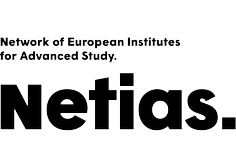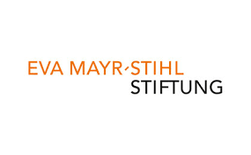Prof. Dr. Evi Zemanek
Medien-, Literatur- und Kulturwissenschaften
Internal Senior Fellow
Oktober 2020 - Juli 2021
CV
Evi Zemanek is Professor of Media Ecology and Comparative Media Studies (Interart Studies) at the Institute for Media and Cultural Studies, University of Freiburg. She holds a PhD in Comparative Literature from LMU Munich. Besides intermedia and intercultural studies, her research interests lie within the fields of green media studies, transmedia ecocriticism, environmental journalism, literary ecology and cultural ecology. She has published on the topics of transmedia aesthetics of nature, proto-ecological discourses on cultural sustainability, risk narratives and ecopoetry, and more generally, on the history and poetics of “ecological genres” in various forms of media, especially caricatures in historical magazines.
She is a member of the Transatlantic Humboldt Network Environmental Humanities and the Upper Rhine Cluster for Sustainability Research; she founded the DFG-sponsored research network Ethics and Aesthetics in Literary Representations of Ecological Transformations as well as (together with Birgit Schneider) the EcoMedia Working Group (within the Society for Media Studies). She was a fellow at the Rachel Carson Center for Environment and Society (LMU Munich), received the Heinz Meier-Leibnitz Award from the DFG, and was accepted in DFG’s Heisenberg Programme.
For the duration of her FRIAS fellowship in 2020-21 she is one of the core team members of the FRIAS Research Focus Researching and Building Resilience in the Environmental Humanities while individually working on her current project Ambivalent Ozone: Strategies of Resilience and Regeneration in Popular Media (1839–2019) – Towards a Cultural History of O3.
Publikationen (Auswahl)
- Ecological Thought in German Literature and Culture, hg. v. Gabriele Dürbeck, Urte Stobbe, Hubert Zapf, Evi Zemanek (Ecocriticial Theory and Practice, Lexington Books), Lanham/MD 2017.
- Nachhaltigkeit interdisziplinär. Konzepte, Diskurse, Praktiken, hg. v. U. Kluwick u E. Zemanek, Köln u.a.: UTB-Studienbuch Böhlau/Vandenhoeck & Ruprecht 2019.
- Questionner les Humanités environnementales: regards Croisés France/Allemagne, hg. v. A. Choné, T. Freytag, P. Hamman u E. Zemanek, Sonderheft der Révue d'Allemagne (2020).
- Das Ozon als Pharmakon in Fontanes literarischen, epistolarischen und autobiografischen Werken. In: Urs Büttner/Ines Theilen (Hg.): Phänomene der Atmosphäre. Ein Kompendium. Stuttgart 2017, 379-394.
- An Entangled History of Environmental and Cultural Sustainability: Satirical Reflections on the German Forest and the German Oak as Resources of Cultural Energy. In: Cultural Dimensions of Sustainablity, hg. v. Gabriele Rippl u. Torsten Meireis, London 2018, 153-182. PDF
- (zus. m. Sophia Burgenmeister): Satirical Glimpses of the Cultural History of Vegetarianism. Environment & Society Portal, Virtual Exhibitions 2019, no. 5. Rachel Carson Center for Environment and Society. http://www.environmentandsociety.org/exhibitions/satirical-glimpses-cultural-history-vegetarianism
FRIAS-Projekt
Ambivalent Ozone: Strategies of Resilience and Regeneration in Popular Media (1839–2019) – Towards a Cultural History of O3.
From the perspective of the Environmental Humanities, ozone exerts a special fascination rooted in its twofold ambiguity: As a stratospheric phenomenon, it protects humans in the form of the ozone layer from harmful UV radiation, but, as a strong oxidant, it can also cause harm to health. Since humans cause both its formation near the ground and its destruction in the stratosphere, ozone is perceived not only as a natural phenomenon but also as an anthropogenic problem. Ever since F. Schönbein discovered ozone in 1839, chemists and educated citizens alike have tried to understand its ambivalent effects. Since the last third of the 19th century, the invisible gas has provoked the imagination in pseudo-scientific, literary, and artistic fields popularized in mass media. The documents and sources discovered by Evi Zemanek demonstrate hope, and, even more so, fear; they (seriously and satirically) suggest cultural strategies of resilience in the face of a perceived threat. This project reacts to various impulses coming from different disciplines: the approach of a ‘cultural history of nature’ developed within cultural studies; the idea of ‘elemental media’ recently emerging in media studies; the new paradigm of ‘material ecocriticism’ flourishing in literary studies; and the concept of ‘material history’ or ‘substance stories’ as alternative narratives, which illuminate the meaning of substances in cultural, social and political discourse. Drawing on input from the history of science, environmental policy, and other fields of research, the project seeks dialogue with the environmental humanities and beyond.





